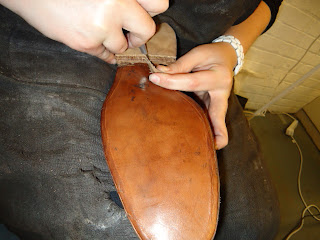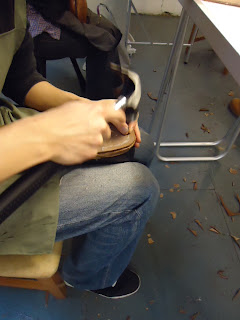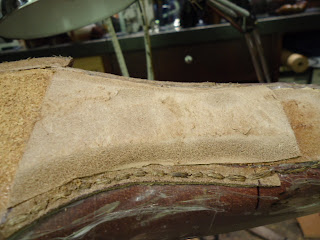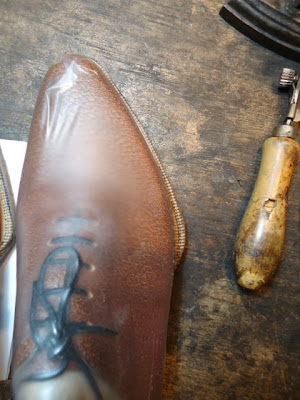Chatting through the last two weeks, we realised that we've been teaching our shoemaking courses for over five years (we can't quite believe it)! It's been a learning curve for us as lecturers and we've never let ourselves become complacent.
We always try to improve the notes, teaching methods and our approach every time. In the early days we taught much as we had been taught on our apprenticeships - with very little explanation as to why a process was being done or why it was important. Time was partly to blame, but we were also concerned that explaining everything would actually cause more confusion and might make the process even more daunting.

The feedback from students on the courses has really helped us to improve and try new ways of teaching. It is invaluable in fact (so thank you to everyone over the years who took the time to share their praise and criticisms). The positive comments are obviously much appreciated - "it exceeded our expectations", "the teaching was excellent", " I learned so much" - but the constructive criticism is even more valuable.
After this last course we have realised that we do need to explain even more of what is going on and the whys and wherefores.
So our New Year's resolution (well, end of January resolution) is to do just that on each day of the course, starting in New York - what we are going to be doing, what the aim is and where we need to be by the end of the day. It will never be as a strict as that because students invariably work at different paces or find one part of the process easier or harder than others, but it will give everyone a clear goal for each day and hopefully a better understanding of why things have to be done a certain way.

We will also be adjusting the course outline to emphasise even more just how mentally and physically demanding it is. A "shoemaking boot camp" is one phrase that keeps cropping up and not undeservedly so. (Luckily it is also usually accompanied by "but really, really rewarding")!
We do have a great time on the course and it is universally described as at worst "rewarding" and at best "one of the greatest thing's I've ever done", but it is no holiday; we work our students hard!

So, you have been warned....but we hope also very much tempted to give it a try! We have a couple of places left for both New York and London so why not join us? In the mean time, look out for some exciting course news next week, but until then happy shoemaking.



























































